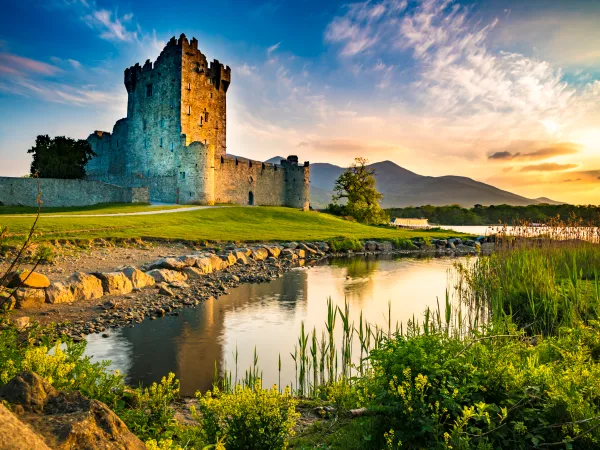Itinerary
Itinerary
Day 1 - Home cities to Dublin
Fly from home city to Dublin, Ireland.
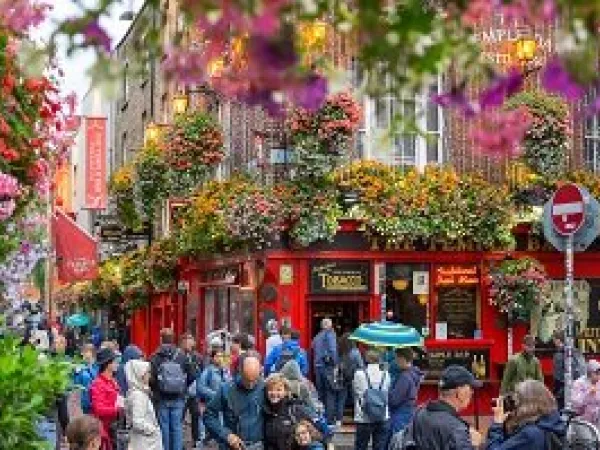
Day 2 – Dublin
Welcome to the Emerald Isle! Following arrival at Dublin Airport, we are met by our driver/guide and escorted to our awaiting motorcoach. We Xplore Dublin with a City Tour, enjoying the sites of Ireland’s capital city. We see the Georgian Squares with their 18th Century houses, St. Patrick’s Cathedral, Phoenix Park (the largest town park in Europe), statue filled O’Connell Street and fashionable Grafton Street. We stop at Trinity College to visit the Old Library, housing the 1,200-year-old medieval manuscript Book of Kells. Entering the Long Room, you might think you’ve entered one of J.K. Rowling’s famous Harry Potter books. After checking into our hotel. The remainder of the afternoon is free to rest or Xplore Dublin on your own. This evening spend time with your fellow Xplorers during our Welcome Dinner.
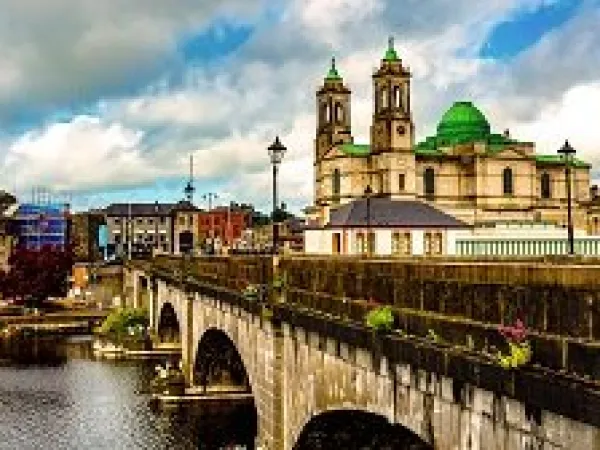
Day 3 – Dublin to Athlone
This morning we depart Dublin and travel through the Irish midlands to Mullingar to Xplore the area on a guided cycle tour along the Royal Canal Greenway to Lough Owel. Along the way we visit St Bridget’s Well and an old famine graveyard before returning to Mullingar to enjoy tea /coffee and scones in a picturesque setting, overlooking the Royal Canal Harbour. Then it’s on to the historic town of Athlone, steeped in history, culture and majesty. A place where you can Xplore Ireland’s ancient east and discover hidden gems with phenomenal stories from fables and folklore of years gone by. Engage on a journey through 5,000 years of history on a guided tour of Athlone Castle, built in the 13th Century. You’ll find yourself walking in the footsteps of kings, queens and monks, listening to historic tales of the town, castle and the lives of the townsfolk of Athlone. Enjoy the company of your fellow Xplorers this evening at Dinner.
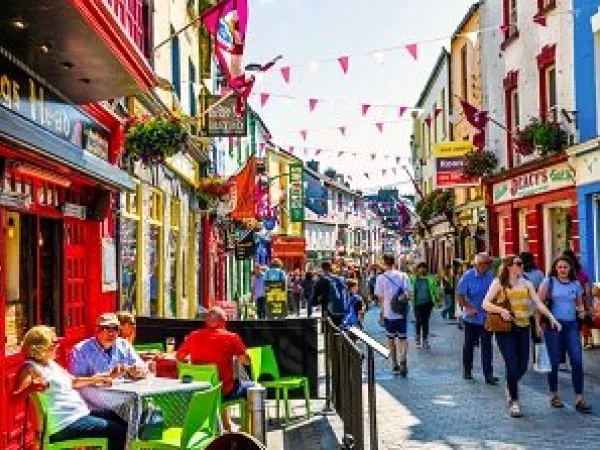
Day 4 – Athlone to Galway City
Departing Athlone, we travel to Portumna for a guided tour of Portumna Workhouse. The workhouse, one of many in Ireland, opened in 1852 and was used as a place of shelter for the poor and homeless during the great famine. Listen to stories of the famine and learn what life was like for the people forced by circumstance to seek shelter here. From here we travel to Galway City where we abandon our coach and see Galway as it should be seen - on foot. We are joined by a local guide for a fun and entertaining walking tour as we wander through the charming old cobbled stone streets of Galway, our guide recounting tales of war and conquest, joy and tragedy, emigration and slavery, success and folly. Followed by free time to explore the city on your own, to experience the blend of past and present housed in century old buildings in this lively city.
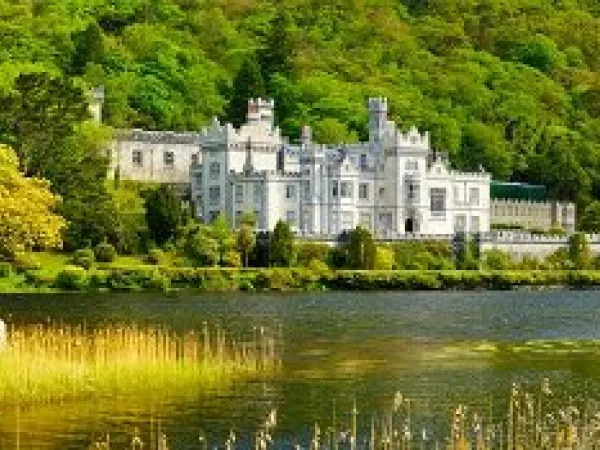
Day 5 – Galway City to Inishmore, Aran Islands
This morning we embark on a tour of the quiet wilderness and vast panoramic views of Connemara, a magical region, with captivating landscapes, heather covered mountains, beautiful lakes and bogs. Oscar Wilde described Connemara as “a place of savage beauty” and has been a prime location of many films. Stopping for lunch at one of the most photographed former Estate homes in Ireland - Kylemore Abbey. Built in 1866, as a private residence until 1920 when it became home to the Benedictine Nuns. Visit the Abbey with its beautifully restored period rooms, learn about its history of tragedy, romance, education, and spirituality. Xplore the 6-acre Victorian Walled Garden with its delightfully restored garden buildings and formal flower gardens. Discover woodland and lakeshore walks that will take you on a beautiful journey through the 1,000-acre estate. Our next stop is Connemara National Park and Visitor Centre. With 7000+ acres of scenic landscape complete with its own herd of Connemara ponies! Perhaps catching a glimpse of them on our walk along the Diamond Hill Trails. From here, we travel to Rossaveal where we board the ferry to Inishmore, the largest of the three Aran Islands and one of the highlights of the Wild Atlantic Way. Upon arrival, we check in to our hotel for a two-night stay. It’s a short walk to the local pub for dinner and an evening of Irish entertainment…Guinness anyone!
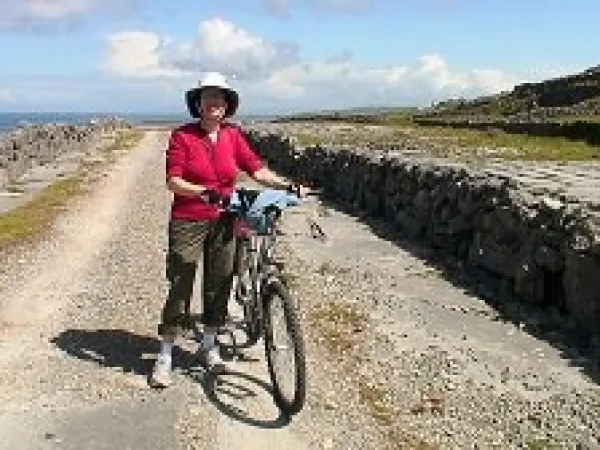
Day 6 – Inishmore
Today we enjoy a full day Xploring Inishmore on bicycles. The island is only 12km in length and 3km wide, with narrow winding roads, quaint shops, Irish hospitality and breathtaking costal views. Infused with history the island resembles an outdoor museum with over 50 different monuments of Christian, pre-Christian and Celtic mythological heritage. Parking our bikes, we take a 1km walk to the world renowned forth of Dun Aonghasa. A prehistoric hill fort perched precariously on a 330-foot cliff over the harsh Atlantic Ocean. One of Ireland’s most ancient features estimated to be more than 3000 years old. Standing in Dun Aonghasa, feels a little like teetering on the edge of the world.
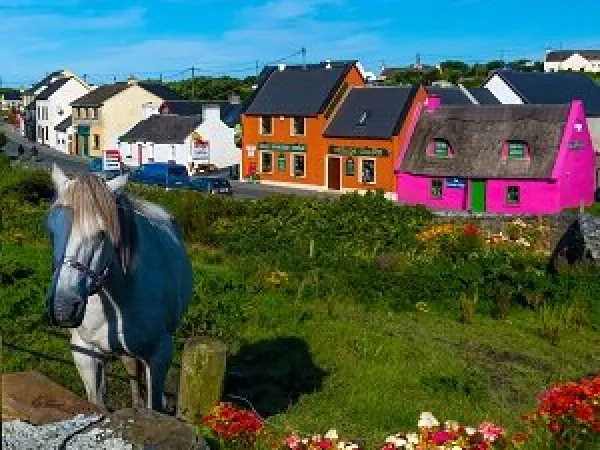
Day 7 – Inishmore to Doolin
We depart Inishmore on the mid-morning sailing to the quaint and colourful village of Doolin. Following lunch, we travel along the shores of Galway Bay and through the lunar type landscape of the Burren to Aillwee Cave. Led by a cave expert we Xplore the beauty beneath the Burren, caverns with frozen waterfalls and ancient stalactites and stalagmites. A visit to the gift shop is a must, be sure to sample the vast selections of local cheese, so delicious! Winding our way around the limestone mountain we stop at the 6000+ year old Poulnabrone Dolmen one of the most famous landmarks in the Burren. From here, we return to Doolin for a two-night stay. This evening we enjoy Dinner at Gus O’ Connors Pub established in 1832, known world-wide for its toe taping, knee slapping, sing along, traditional Irish music.
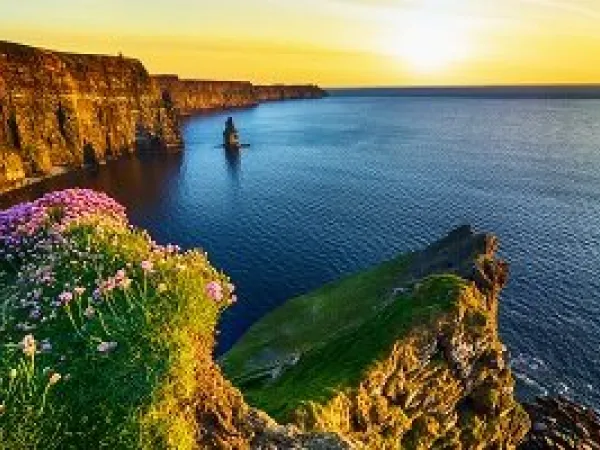
Day 8 – Doolin
We are joined this morning by a local guide for an exciting and rewarding cliff walk to the majestic Cliffs of Moher. We cross through farmlands that have been handed down through generations. Learn the history of the area and the rural lifestyle enjoyed by the local people. We follow along the cliff edge offering stunning views, as we make our way to the highest point of the cliffs standing 702 feet above sea level. Waves crashing against the cliffs, puffins in their natural habitat and waterfalls, the walk offers the best and most remarkable views of the cliffs. Following some free time to appreciate the awe-inspiring views, we board our coach and return to Doolin. A stop at the local pub for a well-deserved bevy may be in order before heading out to Xplore the village and its charming shops on your own.
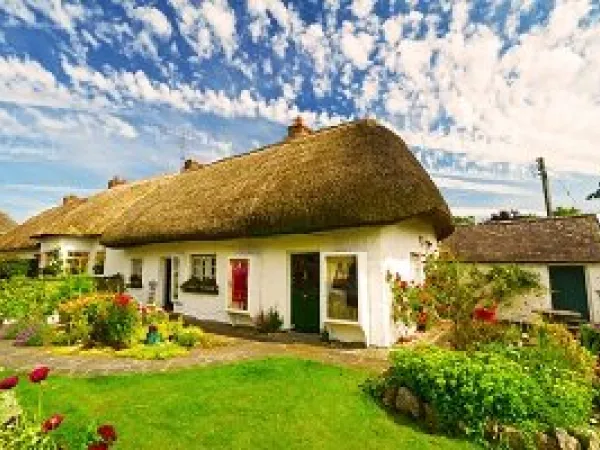
Day 9 – Doolin to Killarney
Leaving a little piece of our hearts in Doolin, we travel along the Wild Atlantic Way, past castle ruins, country cottages and through picturesque villages to the charming town of Adare, with its main street punctuated by beautiful stone buildings, thatched cottages, medieval monasteries and a picturesque village park. We continue to the vibrant town of Killarney for a three-night stay. Surrounded by incredibly beautiful countryside, Killarney is a very special place indeed. Brim full of history, heritage, activities, and of course wonderful Irish hospitality. Some of which you will experience this evening while enjoying Dinner with your fellow Xplorers.
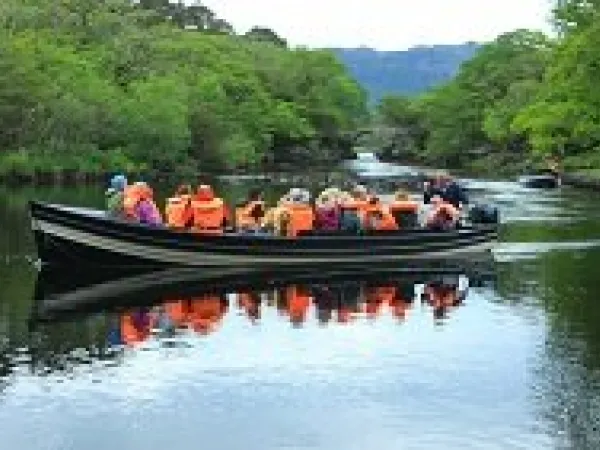
Day 10 – Killarney
Today’s adventure begins with a short drive to Kate Kearney’s Cottage, well-known to be one of Ireland’s oldest ‘An Sibin’ and our starting point for a beautiful walk through a pass in the mountains known as the Gap of Dunloe. As we walk through the mountain pass, we enjoy spectacular scenery while winding our way around numerous lakes and between the steep slopes of Purple Mountain and the Mac Gillycuddy’s Reeks to Killarney’s Upper Lake. After enjoying some refreshments, we board a traditional style boat. Captained by a local Irishman sharing the history and stories of the area, certainly one of the many highlights of the days adventure. Gently making way, across the glassy surface of the three Lakes of Killarney, gliding under old stone bridges and ending at beautiful Ross Castle. Today’s amazing journey is something you won’t soon forget!
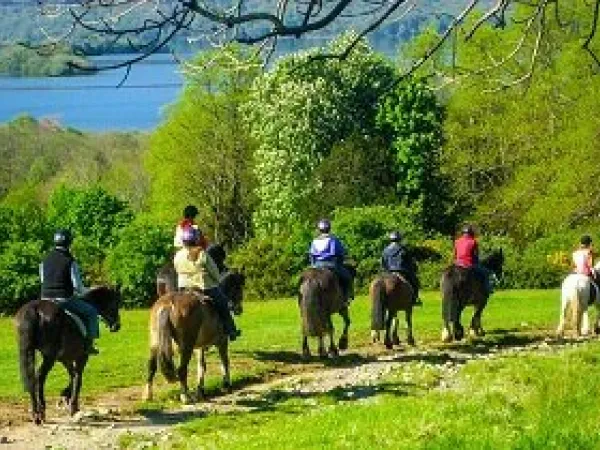
Day 11 – Killarney
There is no better way to Xplore the jaw-dropping beauty of Killarney National Park than on a gentle horse ride through the park, led by a local expert, no experience required. Travelling over vast expanses of green grass, past collectives of deer, interacting naturally and dancing around, sparkling lakes in the distance and mountains lining the backdrop, adding an extra layer to the awe-inspiring landscape, a truly magical experience creating unforgettable memories. The remainder of the day is yours to enjoy at leisure. With many options available, your guide will have plenty of suggestions for you.
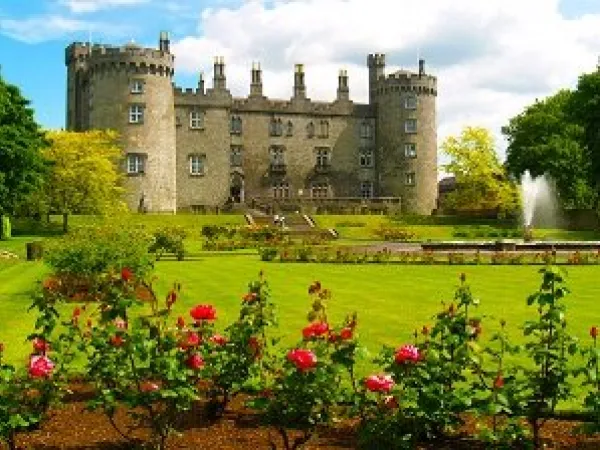
Day 12 – Killarney to Kilkenny
We bid farewell to wonderful Killarney, and hello to Kilkenny City, home of the Medieval Mile on the banks of the River Nore. During our walking tour with a local guide, we hear the history and tales recounted and learn what makes Kilkenny so unique. A visit to Kilkenny would not be complete without visiting impressive Kilkenny Castle, remodeled in Victorian times, decorated in 1830’s splendor and set in extensive parklands a beautiful and impressive structure not to be missed. Following hotel check in, the remainder of the day is free to explore the medieval city of Kilkenny on our own. This evening we can visit one of Kilkenny’s local pubs for dinner and some local Irish entertainment. Who will say they enjoyed a Kilkenny in Kilkenny!
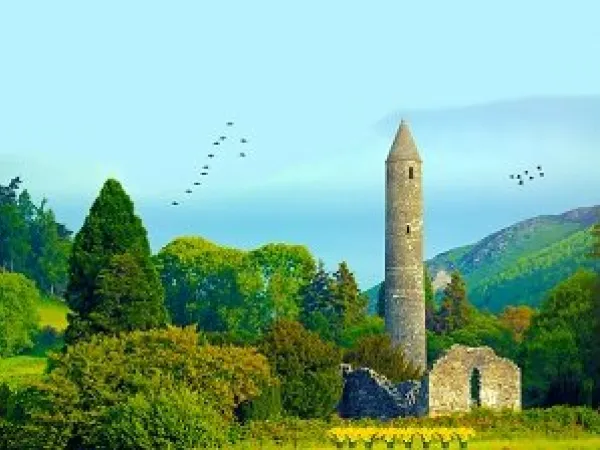
DAY 13 – KILKENNY TO DUNBOYNE
Departing Kilkenny this morning, travelling over the scenic Wicklow Gap to Glendalough. An early Christian ecclesiastical settlement founded by St. Kevin in the 6th century. Set in a peaceful glaciated valley with two lakes, the monastic remains include a superb round tower, stone churches and decorated Celtic crosses. Following an audiovisual presentation at the Visitors Centre and a guided tour of the site we take the scenic Green Road Walk to impressive and serene Upper Lake. From here we continue to the sleepy village of Dunboyne and check into our hotel with a history. This evening we enjoy a Farewell Dinner with our fellow Xplorers.

DAY 14 – DEPART DUBLIN AIRPORT
After breakfast we transfer to Dublin Airport for our flight home with fond memories, new friends, newly acquired accents and many stories to relate to friends and family. Go n-éirí an t-ádh leat (May the Luck of the Irish be with you)
Dates & Pricing
Dates & PricingPrice coming soon
Secure your seat with a $700 deposit!
Get a jump on the crowd by making a risk free deposit. As this trip is still in the planning stage, your pre-reservation entitles you to be notified as soon as the full itinerary, with firm dates and pricing, is posted. We do this so you can see what will be offered in the coming months/year.
Tour Highlights
Tour HighlightsDublin City Tour
Some of the world’s finest Georgian buildings can be observed in the capital of Ireland. The 5 Georgian Squares of Dublin – Merrion Square, Fitzwilliam Square and St. Stephen’s Green in the south city and Parnell Square and Mountjoy Square on the north side – are some of the most iconic features of Ireland’s capital. They are probably the best examples of the stunning, formal architecture for which the city of Dublin is famous for. Developed and built in sequence between 1750 and 1830, each of Dublin’s Georgian Squares has its own special characteristics of Georgian architecture. See St. Patrick’s Cathedral, constructed on the site of an ancient well supposedly used by Saint Patrick himself. It’s the largest cathedral and one of the most important pilgrimage sites in Ireland, at the heart of Dublin and Ireland’s history and culture for over 800 years.
Trinity College Ol Library, Long Room & Brook of Kells
The main chamber of the Old Library is referred to as the Long Room; at nearly 65 metres in length, it is filled with 200,000 of the Library’s oldest books and is one of the most impressive libraries in the world. When built between 1712 and 1732, shelving for books was on the lower level only, by the 1850s these shelves had become completely full, largely due to being granted the right to claim a free copy of every book published in Britain and Ireland. In 1860 the roof was raised to allow construction of the present barrel-vaulted ceiling and upper gallery bookcases. Arguably the most famous artifact on display in Dublin is the Book of Kells at Trinity College. It has been said that the Book of Kells is one of the greatest contributions to medieval art ever to come out of the British Isles. The book was created sometime around 800AD, in the possession of Trinity College since at least 1661 and on display in the Old Library since the mid-nineteenth century.
Guided Cycling Tour Mullingar
Quiet country roads with stunning views of rich pastureland and beautiful lakes provide the ideal backdrop for your cycle route. Enjoy some fresh air, peace and tranquillity. Mullingar is our starting point. A busy market town finely situated on the River Brosna near the ancient centre of Ireland. Complete with a beautiful Renaissance style Catholic Cathedral that holds breath-taking frescoes. Market Square is home to the statue of the late great Joe Dolan, commemorating the life and music of Mullingar's own internationally renowned singer and entertainer. Cycle north along the Royal Canal, built in the 1800’s, to Lough Owel and on to Multyfarnham with it's 13th Century Franciscan Friary. Enjoy a pleasant cycle along in a gentle landscape rich in lake and canal, lore and legend, afterward relax and enjoy tea or coffee and scones in a picturesque setting overlooking the Royal Canal Harbour
Athlone Castle
There has been a castle at Athlone since the 12th century which highlights its importance as a crossing on the River Shannon into Connaught, known as the gateway to Connaught. Athlone was the setting for many battles down through the centuries. Probably the most famous is the siege of Athlone in 1690 and 1691. This story is brought to life at Athlone Castle through illustrations and a spectacular 360-degree audio visual presentation. A re-enactment of the siege of Athlone is experienced, transporting you to the centre of the battlefield surrounded by cannon fire. Afterwards you are introduced to life-size sculptures of the soldiers who fought here from both sides of the war. You will also hear about the early settlers, how the castle developed in its early years and see a wonderful collection of artifacts highlighting Athlone’s history. There are several impressive viewing points to explore while outside that highlight all that Athlone town, in the heart of Ireland, has to offer.
Portumna Workhouse
Met by a local historian of the workhouse, our introduction begins in the only fancy room in the house, the Boardroom, where the board of guardians, responsible for running the workhouse, held their meetings. We then proceed to the waiting hall, the actual room where people would have entered, when seeking to gain admission to the workhouse. From here, we go to the girls’ schoolroom, we are provided with a short presentation that places the workhouse in its historical and social context. We are then guided through the girls’ yard, the women’s dormitory block, the matron’s quarters and the laundry building. We hear what life was like for those living in the workhouse, the future of its inhabitants and the hardships they faced before entering what has been described as “the most feared and hated institution ever established in Ireland”.
Walking Tour of Galway City
It’s not about the city, it's about the people who lived, loved & laughed here, it's their stories we will hear. The old city of Galway comprises less than 50 acres and is perfect for exploring on foot. Our guide combining quick Irish wit, vivid imagination and a great knowledge in history will paint a picture of Galway in every age. Wandering the streets of Galway recounting tales of war and conquest, joy and tragedy, emigration and slavery, success and folly. You’ll walk in the footsteps of Saint Brendan, Christopher Columbus, Robert Emmet, Daniel O’Connell, W. B. Yeats, Padraig Pearse, James Joyce, John Wayne, J.F. Kennedy and many, many others who have strolled the cobble-stoned streets of Galway.

Kylemore Abbey
Kylemore Abbey is the number one sight to see in the West of Ireland. Kylemore is both a castle and an abbey, built by Mitchell Henry over 150 years ago as a romantic gift to his wife Margaret. In 1920 the Benedictine Order fled Belgium and set up a boarding school while restoring the abbey, walled gardens and the Gothic Church. An absolute must see on a trip to the west of Ireland. This iconic castle is set in the most idyllic location, nestled between the base of Druchruach mountain and the picturesque Lough Pollaacapull. The view of the Abbey with the backdrop of the rugged landscape reflected in the stillness of the lake is a sight to behold, making it an unforgettable part of a trip to Connemara. Filled with spirituality, culture and a sense of tranquility and a remarkable history You can Xplore the woodlands, lake walks and sample some of the Benedictine Nuns recipes in Mitchell’s Café and the Garden Tea rooms.
Connemara National Park
Much of the present Park lands formed part of the Kylemore Abbey Estate and the Letterfrack Industrial School, the remainder having been owned by private individuals. The southern part of the Park was at one time owned by Richard (Humanity Dick) Martin who helped to form the Society for the Prevention of Cruelty to Animals during the early 19th century. The Park lands are now wholly owned by the State and managed solely for National Park purposes. Connemara is Irish landscape at its most dramatic. With soaring mountains, scattered loughs and an intricate coastline, this remote part of Galway is a world away from the trappings of urban life.
Diamond Hill Trail
Our starting point is the visitor centre at the Connemara National Park. From here, the surfaced track takes you along the Sruffaunboy Nature Trail before branching off towards the cone of Diamond Hill. Gravel footpaths and wooden boardwalks ease your passage over the bog as you approach the mountains, with a steady climb up the western slopes to the summit ridge. From here, look to the sea to Inishturk, Inishbofin and Inishshark; to Tully Mountain rising over Ballynakill Harbour and along the intricate Connemara coastline. To the north and east, the Twelve Bens are nothing short of sensational. To the northeast, Kylemore Abbey’s gothic turrets stand out from neighbouring Kylemore Lough; and directly north, the summit of Mweelrea, Connaught’s highest mountain, can be seen peeping out.

Inishmore Aran Islands
The island of Inis Mór (Inishmore) meaning the big island is a place of natural beauty with a unique landscape. It is Well known internationally with over 50 different monuments of Christian, pre-Christian and Celtic mythological heritage. There isn’t far you can go before being somewhere where there’s something of historical interest and little reason to question its importance in modern Irish Culture. A visit to Inishmore gives you a taste of the history and culture, in the landscape and people who live here.
Dun Aonghasa
Dún Aonghasa is situated on the cliff side or south side of Inishmore. It is a semicircular stone fort overlooking the Atlantic. It is deemed to be one of the best examples of its kind in Europe. Archaeologists, scholars and tourists come here from all over the world. A 14-acre site the fort consists of three terraced walls surrounding an inner enclosure containing a platform on the edge of a three-hundred-foot-high cliff. The views from it are breathtakingly spectacular. Excavations carried out in the 1990s indicated that people had been living at the hilltop from c.1500 BC with the first walls and dwelling houses being erected c. 1100 BC. A remarkable network of defensive stones known as a Chevaux de Frise( c.700bc) surrounds the whole structure. Late Bronze Age objects such as rings, tools and beads found on site are now in the National Museum Dublin. Some scholars suggest that the platform overlooking the vast Atlantic Ocean may have had ritual significance.
Doolin
Situated on the Wild Atlantic Way, boasting some of the most breathtaking scenery in Ireland and with a colourful and welcoming village ready to host you during your stay. Located on the edge of the historic Burren in northwest County Clare, and within easy reach of the majestic Cliffs of Moher and the unique Aran Islands, Doolin’s dramatic landscape cannot easily be forgotten. Home to traditional Irish music, with plenty of music and craic to be had every night. Doolin is a vibrant place full of characters, stories and experiences and is home to some of the region’s best accommodation, eateries and beautiful local shops. The people of Doolin are passionate about their community and look forward to welcoming you with open arms.

Cliffs of Moher
We start our Cliff Walk along the road towards Doonagore Castle, soon we leave the road behind and venture onto the walking trail along the Cliffs of Moher. Breathing in the crisp, salty Atlantic air while appreciating the beautiful wildflowers. You can see the gradual rise of the cliffs in the distance ahead, Doonagore Castle to your left on a raised setting overlooking the bay and depending on the weather, the waves of the Atlantic crashing below at the base of the cliffs. The walk is along a gravel path with flagstone steps cut out of the terrain to cross the drains and streams. Along the way we cross the lands of many local farmers, where our guide shares with us how these lands have been farmed through the generations, each handed down from father to son and to grandson. Learn the history of the area and the rural lifestyle enjoyed by the local people of Doolin with the amazing views of lush green grass, rocky cliffs and varying shades of sea and sky. We walk along until you reach the highest point of the Cliffs of Moher standing 214m (702 feet) above sea level, where views of the Dingle Peninsula and Loop Head in the South, the Aran Islands to the West with the Twelve Pins and mountains of Connemara to the North can be seen on a clear day. O'Briens Tower is near the highest point and serves as an excellent viewing platform, as has been the case for hundreds of years. If the landscape was not awe-inspiring enough, you can also keep an eye out for whales and dolphins as you stand on the viewing platform upstairs in the tower and if the waves are especially good, you might spot a few fearless surfers trying to catch a towering swell. Our walk ends at the Cliffs of Moher Visitor Centre with time to visit and take in the craft shops before boarding our coach back to Doolin.
O'Briens Tower
Standing alone on a high cliff, O’Brien’s Tower is the best lookout over what are arguably the most impressive views in all of Ireland. The 19th-century tower was built by a local landowner to attract visitors to the Cliffs of Moher and its stone viewing platform can still be visited today. The tower takes its name from its creator - Cornelius O'Brien a lawyer and wealthy landowner in Co. Clare and one of the first people to realize the potential for tourism in the area. He built O’Brien’s Tower in 1835, to attract what he called "strangers visiting the magnificent scenery of this neighborhood." In that way, O’Brien’s Tower became the first Visitor’s Center in Ireland. It was designed to be a lookout point over the impressive horizon and may have provided a bit of shelter in which Victorian era visitors could enjoy a cup of tea while taking in the cliff setting.
Gus O'Connor's Pub
Welcome to the Home of Irish Traditional Music where great Irish food and a warm Irish welcome awaits you! Since 1832, Gus O’Connor’s has been a fixture in Doolin and is one of Ireland's Best Loved Pubs! Over the years, it has garnered a reputation as one of the best regarded traditional music pubs in Ireland. Doolin is one of the most famous towns in the world for listening to good traditional Irish music and you couldn’t get a better selection of musicians than in Gus O’Connor’s Pub, there’s something marvelously atmospheric about this place where the craic happens
Gap of Dunloe
The visit of Queen Victoria in 1861 put Killarney on the map. She stayed at Muckross House and toured the local area with her ladies-in-waiting (hence Ladies’ View, Queen’s Bridge , Queen’s Cottage etc.). The royal visit inspired other 19th-century famous visitors to the Gap of Dunloe including the Romantic poets; Alfred Lord Tennyson, Sir Walter Scott, and William Thackeray. Enthralled as they were by nature, they were captivated by the rugged wilderness of the Gap and its lakes and mountains. Walking is one of the best ways to appreciate the sheer beauty of the Gap of Dunloe up close. Starting at Kate Kearney’s Cottage early in the day we make the most of the rugged mountain scenery, with vistas opening on each side of dramatic cliff faces and pristine lakes. The route through the Gap is between Purple Mountain and the McGillycuddy Reeks and runs as far as the Upper Lake and Lord Brandon’s Cottage, where we board our traditional open boat for an enchanting trip through the three Lakes of Killarney back to Ross Castle in Killarney.
Lord Brandon's Cottage
A well-known Killarney landmark with a fascinating history. Little remains of the old buildings located at the head of the Upper Lake, apart from the crumbling stone tower. Enjoy a refreshment in the tearoom in the shadow of the quaint tower. Where, according to local folklore, the possessive and reclusive Lord Brandon, was horrified after discovering intimate letters between his wife and Lord Melbourne, the future Prime Minister of Britain and imprisoned his young wife at the cottage. According to local legend, when Lord Brandon’s imprisoned wife complained that she was getting no air, he built the tower to enable her to avail of the open spaces on top while, ensuring she couldn’t flee and remained under his control.
Killarney National Park
Welcome to the Killarney National Park, Ireland’s Oldest National Park. Travelling on horseback over vast expanses of green grass, past collectives of deer, sparkling lakes in the distance and mountains lining the backdrop add that extra layer to the awe-inspiring landscape, a truly magical experience creating unforgettable memories. The park was formed in 1932 when Muckross House & Estate was entrusted into the care of the Irish State. The extent of the park’s range and rugged landscape is 26,000 acres, encompassing the infamous McGillycuddy Reeks Mountain Range which includes Ireland’s highest Mountain, standing at over 1,000 meters. These mountains have known millions of footsteps over the years; with endless exploring of looped and park walks. Nestled within the woodlands and at the foot of these glorious mountains are the three world famous Killarney Lakes; Upper, Muckross and Lough Leane. The lakes, woodlands, waterfalls and living history are the ingredients that make Killarney National Park so unique. Deemed an UNESCO Biosphere Reserve in 1981. Along with housing the largest stretch of native woodland remaining in Ireland, Killarney National Park is also home to the only herd of native red deer. The red deer are believed to have a presence in Killarney, since the last ice age.
Kilkenny Walking Tour
A richly historic place with a warm welcome and the promise of an unrivalled experience that resonates long after leaving. It is also the perfect city to xplore on foot! Our guide, the gatekeeper of legends will enthrall us with Kilkenny’s magnificent and magical history while rambling through the winding laneways, immerse us in the richness of salacious tales and scintillating stories from Medieval times. Xploring Ireland’s famous Medieval Mile. As Ireland’s best preserved medieval city, the mile captures 800 years of history and hosts renowned and hidden gems, from the magnificent Castle and the enchanting Rothe Gardens to St. Canice’s Cathedral and the Hole in the Wall. This is a city shrouded in tales of superstition and subterfuge. For the brave, grab the opportunity to climb St. Canice’s round tower which at 30m, is one of only two climbable towers in Ireland.

Kilkenny Castle
Welcome to Kilkenny Castle and Parklands. Few buildings in Ireland can boast a longer history of continuous occupation than Kilkenny Castle. Founded soon after the Norman conquest of Ireland, the Castle has been rebuilt, extended and adapted to suit changing circumstances and uses over a period of 800 years. Through the centuries, Kilkenny Castle has been a backdrop to great events and great lives. The Castle’s history is full of larger-than-life characters like Richard Fitzgilbert de Clare (better known as ‘Strongbow’) and William Marshal, the great castle builder and regent of England. During the fourteenth century, Dame Alice Kyteler was imprisoned here; she was convicted of witchcraft and sentenced to be burned at the Market Cross in the High Street. James, 1st Duke of Ormond, Oliver Cromwell, King James II and King William III, all spent time at Kilkenny Castle. In 1904, King Edward VII and Queen Alexandra were entertained there during one of their visits to Ireland. In 2017, this ancient Castle hosted royalty once again when HRH Charles, Prince of Wales and HRH Camilla, Duchess of Cornwall came to call. Today, Kilkenny Castle is largely a Victorian remodeling of the thirteenth century defensive Castle, with fifty acres of rolling parkland with mature trees and an abundance of wildlife. Other features include a formal terraced rose garden, woodlands and a man-made lake, which were added in the nineteenth century. There is also a tearoom, playground and several orienteering trails to enjoy.
Glendalough
Guided walks offers a unique journey into the secret heart of Ireland’s most beautiful and historic valleys. Hidden amongst the luscious greenery of the Wicklow Mountains National Park is one of the crown jewels of Ireland's Ancient East. This is Glendalough, the monastery founded by St Kevin in the 6th century that became one of the great centres of learning in early Christian Ireland. The valley of Glendalough is a sweeping expanse that combines unbelievable natural beauty with utter serenity. As you climb upwards into the Wicklow Mountains, clouds pouring over the lip of the valley and the sound of crystal-clear glacial streams bubbling across the rocks, an atmosphere of total tranquility will take over. The name Glendalough gives a clue as to what you'll find here – in Irish, it translates to "valley of the two lakes". The Upper and Lower lakes are beloved and provide ample opportunity to explore, or even a chance to dip your toes in the cool waters. Surrounded by all this beauty, it's easy to see why St Kevin would choose to establish a monastic settlement here. From its humble origins in the 6th century, Glendalough became a beacon of piety and learning. A veritable city in its time, it had farms, a cathedral and the 30-metre round tower that still stands proud today. For over 500 years, this area was at peace, as monks and lay people grew and lived and learnt together. Of course, this doesn't mean that Glendalough was without its troubles. It was attacked and plundered by Vikings, ravaged by fire and ultimately fell to the Normans in 1398, but thankfully we're left with beautiful reminders of what once was.
